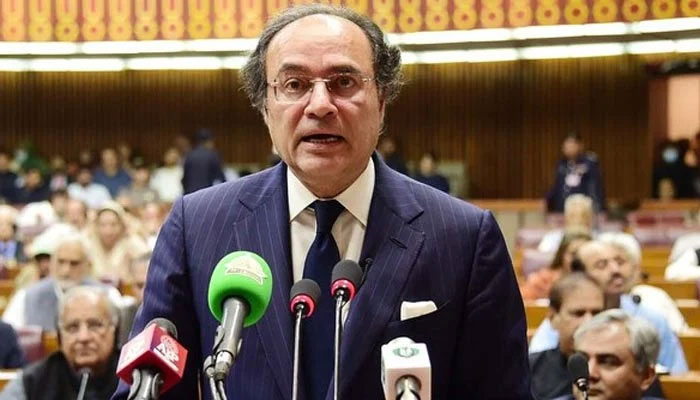Budget 2024-25
Budget does provide some hope regarding macroeconomic stability, given targeted real growth rate of 3.6%
The federal budget for the upcoming fiscal year can be deemed as cautiously optimistic. It is not aggressive, and it doesn’t try doing anything out of the ordinary either. The deepening of the existing taxpayer base continues, while little to no effort has been made in expanding the tax net, to include entities, and individuals that exist outside the tax net. Although the budget speech did mention very clearly a need to move from a consumption-oriented economy to an investment-oriented economy, it does little in explaining how that will be achieved. Finance Minister Muhammad Aurangzeb, who started some time behind the scheduled time, has however promised that this time the government hoped to implement the steps laid out in the budget. The delay in the session was caused by the PPP’s decision not to join the PML-N in parliament. This last-minute decision came on the basis of the lack of agreement on the PSDP, but a token representation from that party did finally take place in the House.
The budget expects an increase in tax revenue by 37.8 per cent, increasing the tax-to-GDP ratio to 10.4 per cent – a tall ask, as rarely has growth in tax revenue been in this range. It is estimated that expected inflation for the next fiscal year is around 12 per cent, which implies a growth in tax revenue by around 22 per cent in real terms. Attaining such a high real growth in tax revenue through deepening would be a difficult task. Digging deeper, it is estimated that income taxes would increase by around 48 per cent – which is also a fairly ambitious number. Despite all the taxation measures, it is difficult to see how the FBR will meet the Rs12.97 billion collection target. Even though the tax rate for the salaried class did not change, a change in tax slabs has led to increased incidence of taxes on the salaried segment. It is to be noted that over the last five years, real incomes have declined by more than 30 per cent and this increased incidence of taxation will further erode post-tax income. In some slabs, the increase in tax incidence is as much as 40 per cent. The salaried class has yet again been targeted for its inability to make as much noise as other rent seeking interest groups. The sovereign continues to target existing taxpayers, while the largesse for the untaxed continues. Another major change is the taxation regime for export oriented industries, which will further increase corporate tax, while reducing incentive to reinvest. It is important to note here that primarily all increase in direct taxes is largely being driven by existing tax holders, effectively implying a deepening of the tax base, rather than an expansion.
A review of indirect taxes suggests that sales tax is expected to increase by 36 per cent, while the Petroleum Development Levy will increase by 33 per cent. Such indirect taxes are predominantly inflationary in nature, and effectively elevate the overall cost base. The increase in withholding taxes from 1.0 per cent to 2.5 per cent on the manufacturer-distributor-retailer value chain may not yield any significant results in terms of non-filers becoming filters, but would simply result in manufacturers absorbing the cost and then passing on the price to the consumer. As all manufacturers pass on the price, the overall cost basis would increase, eventually leading to inflation. In such a context, the informal cash market and trade in it will continue to thrive, as there will be a greater incentive to stay out of the system.
One is hard-pressed to find whether any evaluation exercises have ever been conducted to assess whether an increase in incidence of withholding taxes for non-filers has actually led to non-filers becoming filers. More importantly, once they become filers, whether they even file their taxes in a fair manner. Such withholding taxes have been there for the longest time, and have not resulted in any significant improvement in conversion of non-filers to filers. If anything, draconian measures such as blocking mobile phone SIMs of individuals who could not file taxes one year has further discouraged individuals from filing taxes. The tax policy and design mechanism is flawed at best – and this is fairly obvious in the budget. The withholding taxes for non-filers effectively increase the cost of doing business, while doing little to improve overall compliance and increase tax collections. The bulk of taxes continue to be paid by the usual suspects: corporations that are part of the formal system, salaried individuals, petroleum development levy, and other indirect taxes, which are basically taxes on consumption and disproportionately affect vulnerable households, vis-a-vis more affluent households.
The budget does provide some hope regarding macroeconomic stability, given a targeted real growth rate of 3.6 per cent, and little reliance on external funding to bridge deficits. This clearly demonstrates that growth will be largely indigenous, rather than driven by imports. Another welcome feature is a resolve to privatize loss-making state owned entities, particular electricity distribution companies, and the national flag carrier. Hiving off these can potentially reduce recurring losses substantially, while also reducing subsidies with the power sector. The resolution of this required deep and lengthy structural reforms – for which the government has demonstrated resolve. On the revenue side, the budget failed to expand the tax net, and has further burdened salaried and formal segments of society. So, while the budget may be cautiously optimistic, it is inflationary in nature, continues to punish existing taxpayers, and does little to reduce the sheer size of the informal economy. It wants to encourage investments, yet pulls absolutely no policy levers that can do that. Stranded capital that remains outside the system may continue to slosh around in cash, while the formal economy remains starved of capital. Inadvertently, the overtaxed segments will continue to bear the burden of a narrow tax base, while desperately trying to exit it at a time when inflation has left many unable to meet even the basic costs of life.
-
 Minneapolis: ICE Officer Fires Bullet After Migrant Attacks With A Shovel
Minneapolis: ICE Officer Fires Bullet After Migrant Attacks With A Shovel -
 Prince William Gets 'mobbed' By Animals During Rural Engagement
Prince William Gets 'mobbed' By Animals During Rural Engagement -
 Angelina Jolie Finally Escaping L.A.?
Angelina Jolie Finally Escaping L.A.? -
 Jodie Foster Reflects On Harsh Reality Of Why She Escaped Sexual Abuse As Actress
Jodie Foster Reflects On Harsh Reality Of Why She Escaped Sexual Abuse As Actress -
 Matthew McConaughey Takes Legal Action To Save THIS Iconic Phrase From AI Misuse
Matthew McConaughey Takes Legal Action To Save THIS Iconic Phrase From AI Misuse -
 Prince Harry, Meghan Markle To Have Baby In 2026?
Prince Harry, Meghan Markle To Have Baby In 2026? -
 Bella Hadid Steals The Spotlight At 'The Beauty' Premiere
Bella Hadid Steals The Spotlight At 'The Beauty' Premiere -
 Taylor Swift 'worst Photos': Singer's Not-so-perfect Moments Spark Debate
Taylor Swift 'worst Photos': Singer's Not-so-perfect Moments Spark Debate -
 Arizona Mother Traces Missing Son Living In Neighbour’s Home After Killing Hm
Arizona Mother Traces Missing Son Living In Neighbour’s Home After Killing Hm -
 OpenAI Launches ChatGPT Translate To Rival Google Translate
OpenAI Launches ChatGPT Translate To Rival Google Translate -
 Top AI Themes Poised To Shape 2026: Here’s How
Top AI Themes Poised To Shape 2026: Here’s How -
 Meghan Markle Accused Of Stealing 'bookmark' Idea
Meghan Markle Accused Of Stealing 'bookmark' Idea -
 Leonardo DiCaprio Changes His Stance On THIS To Remain 'his Handsome Self'
Leonardo DiCaprio Changes His Stance On THIS To Remain 'his Handsome Self' -
 Girl Dies After Years Of Alleged Starvation By Mother In West Virginia
Girl Dies After Years Of Alleged Starvation By Mother In West Virginia -
 Here’s How Many Under-16 Social Media Accounts Were Removed In Australia
Here’s How Many Under-16 Social Media Accounts Were Removed In Australia -
 Drew Barrymore Gets Candid About The Words That Haunted Her Childhood
Drew Barrymore Gets Candid About The Words That Haunted Her Childhood




